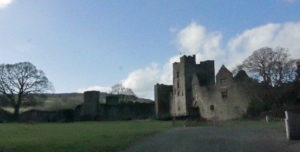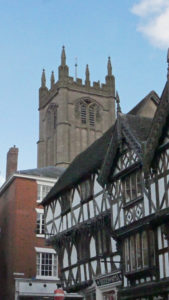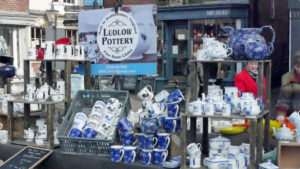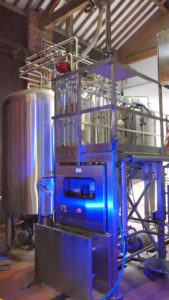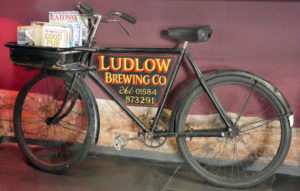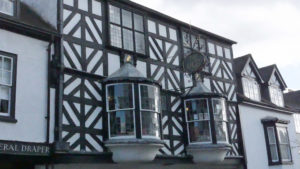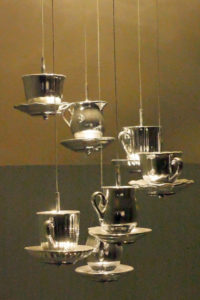We visited the charming market town of Ludlow in February (fortunately before the dreadful stormy weather started!) The town has a wealth of historic buildings including the Castle, which dates back to 1085 – the entrance fee is £6 for seniors. We actually decided not to go into the castle area this time, because we have been there before when there has been a specific event on. The next big event in the Castle grounds is the Spring Festival on 16th May. This will be all about eclectic music, motors plus food and drink.
In fact Ludlow is a great foodie town with many restaurants, bistros, cafes, pubs, delicatessens and butchers, all of which make a point of offering locally-sourced ingredients. The day we went it was necessary to look into several cafes before finding somewhere with a free table, but we were eventually rewarded by finding one with a selection of home-made cakes on offer.
It was market day in the town square with more than forty stalls selling a range of goods – the local crafts were especially good quality. The market has been held here since the twelfth century – in fact the whole town exudes history and tradition with so many well preserved mediaeval and llisted buildings.
Well worth a visit is St Lawrence’s church with its stained-glass windows and carved misericords. It was originally built in the 11th century with additions throughout the following centuries. There is a small museum on the first floor. St Lawrence was an early martyr who defied the Roman church by giving away its riches to the poor. He was roasted on a griddle and during his torture cried out: “I am already roasted on one side and, if you would have me well cooked, it is time to turn me on the other”. Yeek!
Walking around the outside of the church you can see the ancient Readers House.At the main junction of the old town is the Buttercross and the ground floor the building is still used by traders on market day. On the upper floor is Ludlow Museum with interactive exhibits. It costs £1 to get in. One of the most fanous buildings in the town is the Feathers Hotel with its timber facade. It was constructed in 1616 following the investiture of Charles Prince of Wales with traditional ostrich feathers within the design from the prince’s badge. The Castle Lodge is a mediaeval house, which has the largest collection of oak panelling in England. I was fascinated by the unique leaded oriel windows of the Angel Inn on Broad Street. It is now a restuarant, but originally was a coaching inn built in 1555 and once visited by Admiral Lord Nelson.
Before leaving the town, we paid a visit to Ludlow Brewery and Visitor Centre. It is situated in a restored Victorian railway shed, so naturally it is adjacent to the railway station. You can see the gleaming brewery equipment and there are plenty of places to sit and enjoy a pint of real ale. As well as serving food and drink, the brewery is proud to be environmentally friendly and low carbon. They also use local hops from Little Lambswick Hop Farm in Tenbury Wells.
So, Ludlow is well worth a visit. It is situated in the Welsh Marches – the England-Wales borderlands, an area of varied natural beauty.
